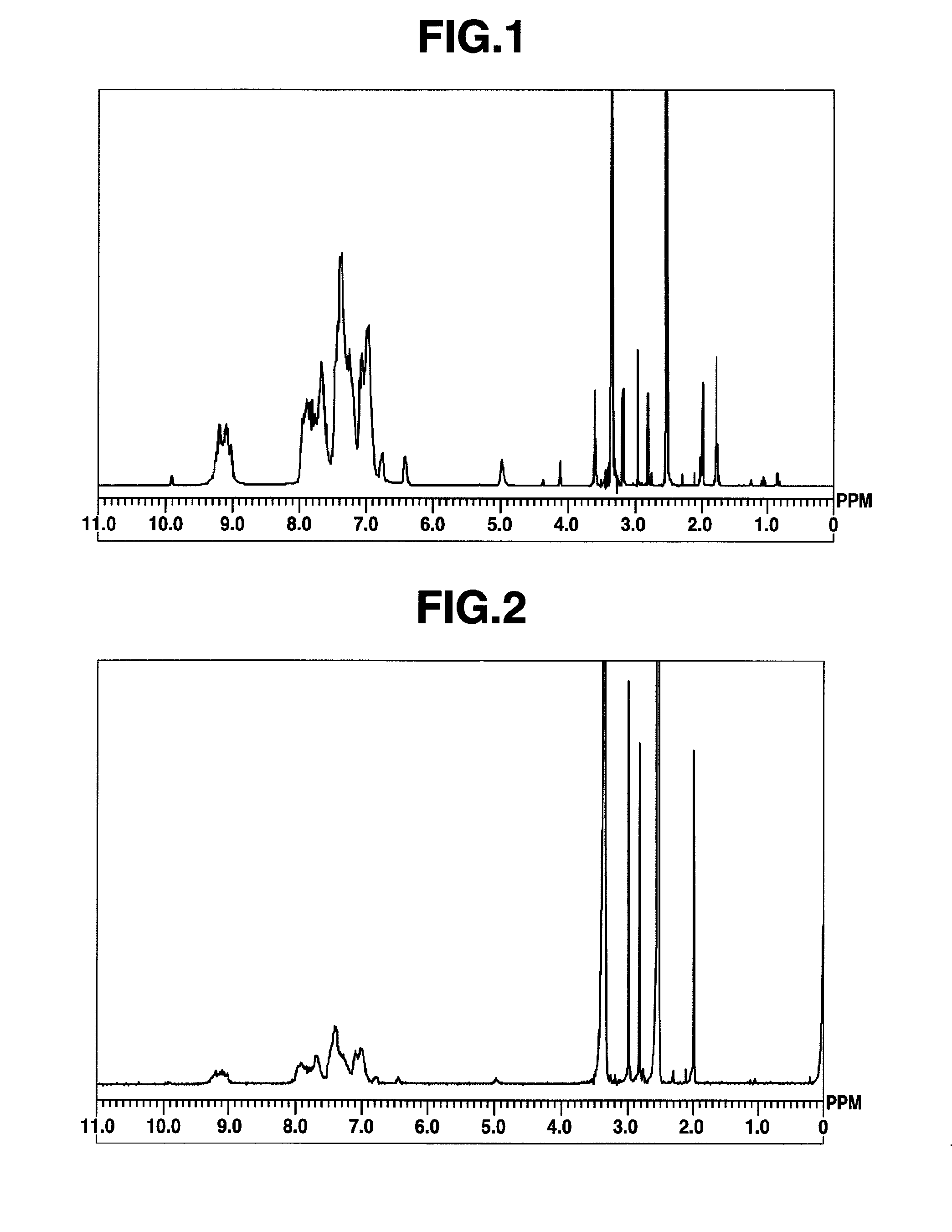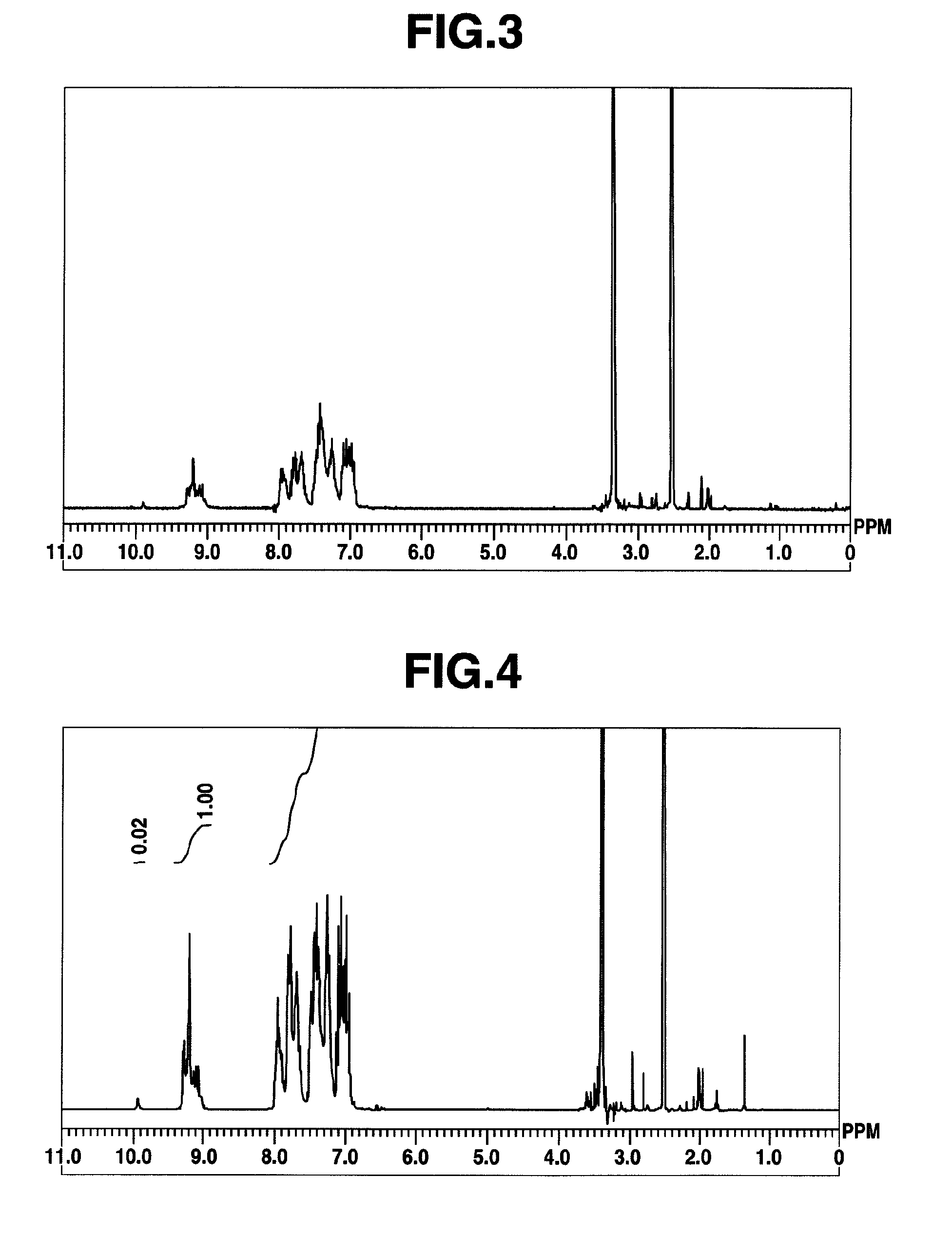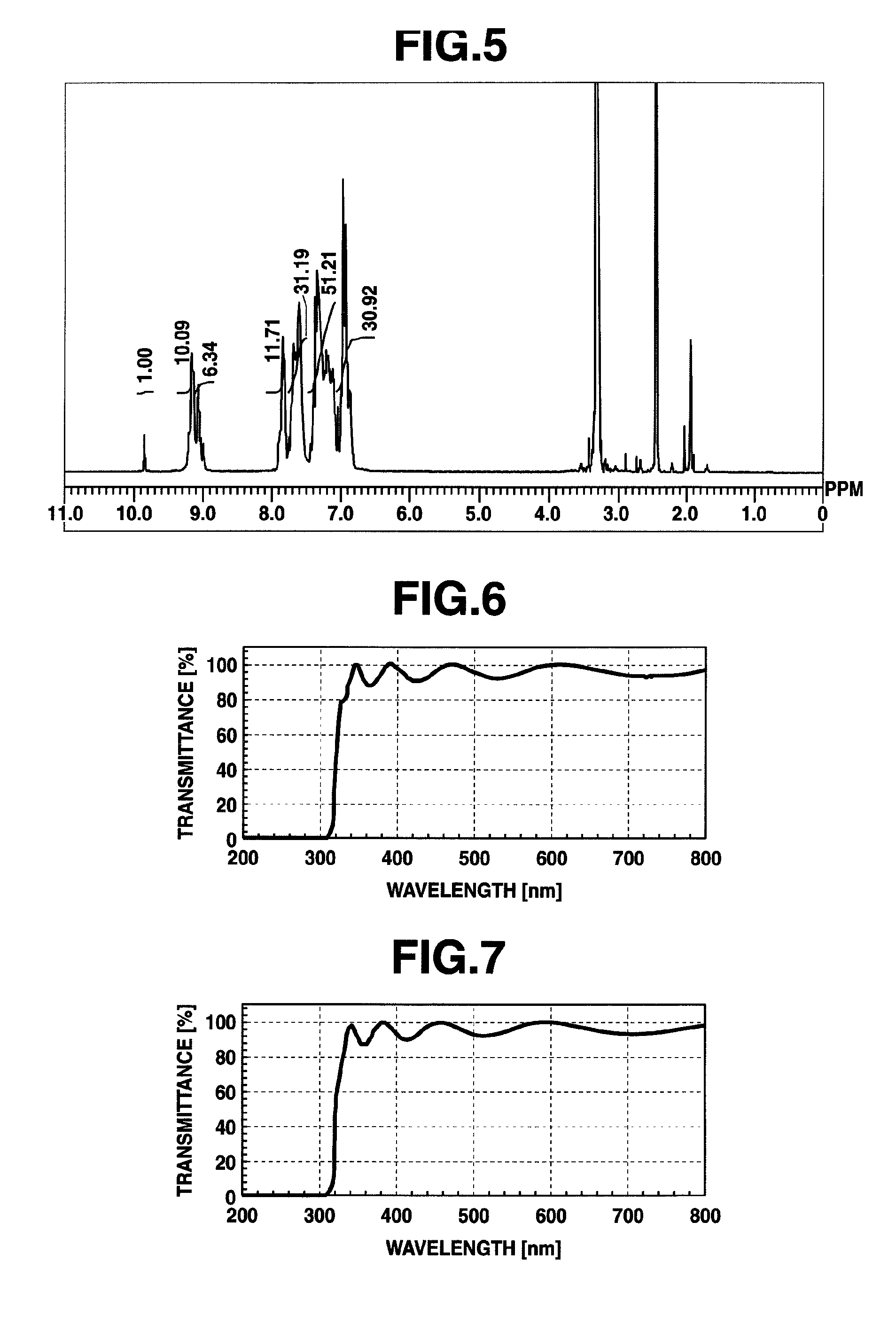Triazine ring-containing polymer and film-forming composition comprising same
a triazine ring and polymer technology, applied in the direction of optical filters, solid-state devices, electrical devices, etc., can solve the problems of difficult design of materials with refractive index higher than 1.7, low heat-resistant temperature of materials, and low decomposition temperature compared, so as to achieve high heat-resistance and high transparency , the effect of high refractive index
- Summary
- Abstract
- Description
- Claims
- Application Information
AI Technical Summary
Benefits of technology
Problems solved by technology
Method used
Image
Examples
example 1
Synthesis of High-molecular Compound [3]
[0425]
[0426]Under air and in a 200-mL, four-necked flask, 9,9-bis(4-aminophenyl)fluorene [2] (9.29 g, 0.027 mol, product of Aldrich Corporation) was placed and dissolved in N,N-dimethylacetamide (hereinafter “DMAc,” 80 mL), followed by heating to 100° C. in an oil bath. Subsequently, a solution of 2,4,6-trichloro-1,3,5-triazine [1] (3.69 g, 0.02 mol, product of Tokyo Chemical Industry Co., Ltd.) in DMAc (20 mL) was added to initiate polymerization.
[0427]Five minutes later, aniline (3.34 g, 0.036 mol) was added, followed by stirring for 10 minutes to terminate the polymerization. After the resultant polymerization mixture was allowed to cool to room temperature, it was reprecipitated in an aqueous solution of potassium carbonate (15 g, 0.11 mol) in water (1,000 mL). The resulting precipitates were collected by filtration, redissolved in THF (50 mL), and then reprecipitated in a mixed solvent of hexane (540 mL) and ethanol (60 mL). The resulting...
example 2
[0429]Using 9,9-bis(4-aminophenyl)fluorene [2] (8.37 g, 0.024 mol), 2,4,6-trichloro-1,3,5-triazine [1] (3.69 g, 0.02 mol) and aniline (5.64 g, 0.06 mol), synthesis was conducted in a similar manner as in Example 1 to obtain a high-molecular compound [3] (hereinafter abbreviated as “HB-TFA56,” 11.5 g). The molecular weight of which was different from that of Example 1. The results of 1H-NMR spectrum measurement of HB-TFA56 are shown in FIG. 2. HB-TFA56 so obtained was a compound having structural units represented by the formula (1). The weight average molecular weight Mw of HB-TFA56 as measured by GPC and calibrated against standard polystyrene was 5,600, and the polydispersibility Mw / Mn was 2.67.
example 3
[0430]Using 9,9-bis(4-aminophenyl)fluorene [2] (7.32 g, 0.021 mol), 2,4,6-trichloro-1,3,5-triazine [1] (3.87 g, 0.01 mol) and aniline (5.64 g, 0.06 mol), synthesis was conducted in a similar manner as in Example 1 to obtain a high-molecular compound [3] (hereinafter abbreviated as “HB-TFA32,” 10.9 g). The molecular weight of which was different from that of Example 1. The results of 1H-NMR spectrum measurement of HB-TFA32 are shown in FIG. 3. HB-TFA32 so obtained was a compound having structural units represented by the formula (1). The weight average molecular weight Mw of HB-TFA32 as measured by GPC and calibrated against standard polystyrene was 3,200, and the polydispersibility Mw / Mn was 2.02.
PUM
| Property | Measurement | Unit |
|---|---|---|
| refractive index | aaaaa | aaaaa |
| temperature | aaaaa | aaaaa |
| carbon number | aaaaa | aaaaa |
Abstract
Description
Claims
Application Information
 Login to View More
Login to View More - R&D
- Intellectual Property
- Life Sciences
- Materials
- Tech Scout
- Unparalleled Data Quality
- Higher Quality Content
- 60% Fewer Hallucinations
Browse by: Latest US Patents, China's latest patents, Technical Efficacy Thesaurus, Application Domain, Technology Topic, Popular Technical Reports.
© 2025 PatSnap. All rights reserved.Legal|Privacy policy|Modern Slavery Act Transparency Statement|Sitemap|About US| Contact US: help@patsnap.com



